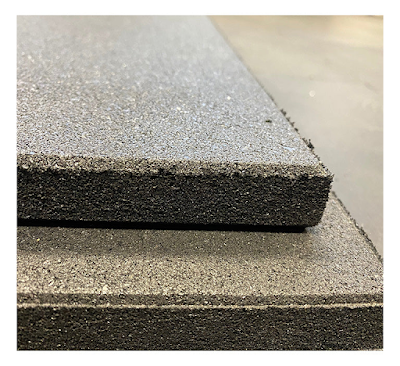Embarking on a fitness journey involves more than just breaking a sweat—it's about creating an environment that motivates and supports your goals. One often overlooked aspect is the flooring. Enter gym flooring tiles, the unsung heroes of home and commercial gyms alike. In this ultimate guide, we'll delve into the world of gym flooring tiles, exploring their benefits, types, and how they can transform any space into a fitness haven.
The Foundation of Fitness
Gym flooring tiles serve as the foundation of a well-equipped workout space. Their impact extends beyond aesthetics; they play a crucial role in ensuring safety, comfort, and durability. Let's uncover the key aspects that make gym flooring tiles the go-to choice for fitness enthusiasts:
Shock Absorption: One of the primary functions of gym flooring tiles is to absorb impact and reduce the strain on joints and muscles. This is particularly important during high-impact activities like jumping, running, or lifting weights.
Durability: Gym flooring tiles are designed to withstand the rigours of daily workouts. Whether you're dropping weights, performing high-intensity workouts, or placing heavy gym equipment, these tiles are built to last, providing a long-term solution for your fitness space.
Traction and Safety: Slippery floors are a hazard in any gym. Gym flooring tiles offer excellent traction, reducing the risk of slips and falls. This is crucial for maintaining a safe workout environment, especially during intense or fast-paced exercises.
Types of Gym Flooring Tiles
The diversity of gym flooring tiles caters to various preferences, needs, and workout styles. Understanding the different types can guide you in selecting the ideal tiles for your space:
Rubber Gym Flooring Tiles: Renowned for their durability and shock absorption, rubber tiles are a popular choice for both home and commercial gyms. They come in various thicknesses and designs, providing versatility for different fitness requirements.
Foam Gym Flooring Tiles: Ideal for home gyms and workout areas, foam tiles offer comfort and impact absorption. They are lightweight, easy to install, and often feature puzzle-like interlocking systems.
Interlocking PVC Tiles: These versatile tiles are easy to install and come in a variety of patterns and colours. They offer a balance of durability, comfort, and aesthetics, making them suitable for a wide range of fitness spaces.
Vinyl Gym Flooring Tiles: Vinyl tiles are known for their resistance to moisture, making them suitable for areas prone to spills or sweat. They offer a sleek and modern appearance, enhancing the overall aesthetic of the gym.
Transformative Applications
Gym flooring tiles aren't limited to traditional gym spaces; their transformative properties extend to various areas, enhancing both functionality and aesthetics:
Home Gyms: Create a dedicated workout space at home with gym flooring tiles that match your style and fitness needs. Whether it's a garage gym or a spare room, these tiles provide a foundation for a convenient and effective workout space. You can even use gym flooring for garages at your homes.
Commercial Gyms: For fitness professionals and gym owners, gym flooring tiles are a wise investment. They contribute to a professional and safe workout environment, catering to the diverse needs of gym-goers.
Fitness Studios: Yoga studios, dance studios, and other speciality fitness spaces can benefit from the versatility of gym flooring tiles. They offer the necessary support for various activities and can be customised to suit the studio's aesthetic.
Conclusion
Transforming your space with gym flooring tiles is a holistic approach to creating a fitness environment that aligns with your goals and preferences. From the shock-absorbing properties of rubber tiles to the comfort of foam options, the variety of gym flooring tiles allows you to tailor your space to meet your unique needs.
